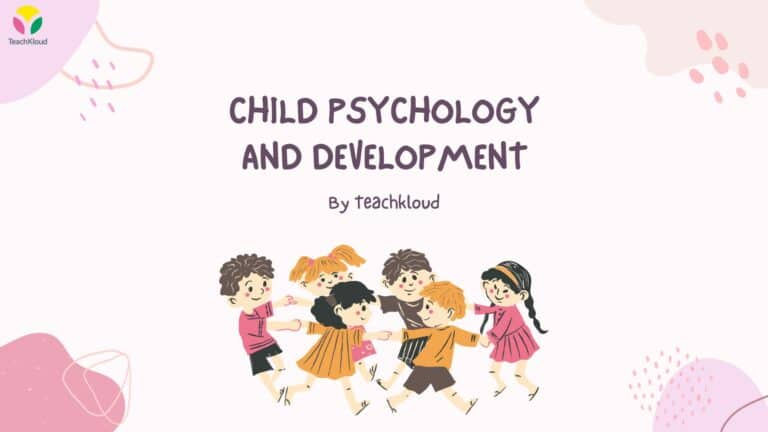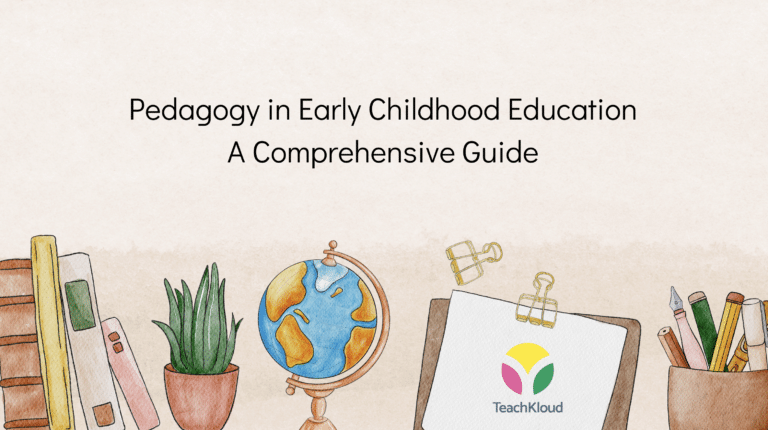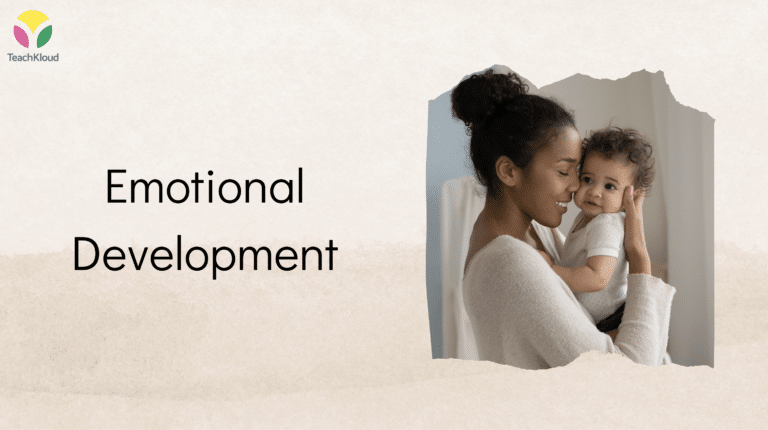This comprehensive guide aims to simplify the emergent curriculum for you, the childcare professional, and bridge the gap between theory and practice. We will discuss the key principles of this approach, the essentials of creating a child-centred learning environment, and delve into the crucial role of the educator. You’ll discover how to foster children’s interests, encourage active exploration, and support their unique learning journeys. We will also touch upon the importance of observing and documenting children’s progress, promoting creativity and enhancing their social and emotional development.
Understanding the Emergent Curriculum: A Guide for Childcare Professionals
As a childcare professional, you are devoted to fostering the potential of each child in your care. The emergent curriculum is a teaching strategy that allows you to achieve this in a meaningful and effective way.
So, what exactly is an emergent curriculum? It’s a way of planning and implementing learning activities based on the children’s interests, passions, and spontaneity. This child-centred approach encourages active exploration and discovery, creating a dynamic and engaging learning environment.
On this journey, you will become a facilitator, guiding children through their learning experiences, capturing these moments of discovery, and providing opportunities for individualised learning. Implementing an emergent curriculum requires a profound level of observation, documentation, and thoughtfulness.
But here’s some good news – you’re not on this journey alone. An emergent curriculum thrives on collaboration – with the children, their families, and with your fellow educators. This collaborative spirit enhances the social and emotional development of your children and helps to create a nurturing learning community.
Finally, the emergent curriculum is a testament to the power of creativity and problem-solving. By tailoring educational activities around what fascinates the children, we enable them to approach learning with curiosity, excitement, and a confident mindset. And as a bonus, it makes assessment and evaluation much more meaningful, as we’re tracking organic, intrinsic progress rather than arbitrary criteria.
Ready to dive deeper into the fascinating world of the emergent curriculum? This guide will delve into the key principles, teaching role, collaborative partnerships, assessment tools, and everything you need you to promote creativity, discovery, and child-centred learning.
Key Principles of the Emergent Curriculum Approach
As a childcare professional, you must grasp the tenets of the emergent curriculum to apply it effectively. In essence, the emergent curriculum is a child-centred approach, designed to foster and deepen children’s learning experiences, based on their interests and ideas. Here are the key principles underpinning this unique approach:
Creating a Child-Centered Learning Environment
Creating a child-centred learning environment is an integral aspect of the emergent curriculum approach. As a childcare professional, you are a strategic architect of learning spaces. Each aspect of the environment you sculpt should be designed with the needs, interests and abilities of the children in your care in mind.
Child-centred learning environments encourage children to move, explore, and interact with their surroundings. Remember that your room layout, furniture, resources, and materials all contribute towards crafting an engaging and stimulating learning landscape.
Safety and Comfort
Firstly, the environment should be safe and comfortable. Children need to feel secure in order to explore and learn without inhibition. Your environment should offer areas for quiet and restful activities, as well as spaces for more active and louder play. Sensory elements, such as soft lighting, calming colours, and texture-rich materials can greatly contribute to creating a soothing atmosphere.
Accessible Resources
Secondly, the materials and resources should be accessible to children. Allowing them the freedom to select and return the resources they want to engage with fosters their autonomy and decision-making skills. You can achieve this by incorporating low, open shelves and clearly labelled storage areas in your layout.
Routine and Flexibility
Thirdly, while routine and predictability can provide comfort and stability, a child-centred environment also values flexibility. Consider how your space can foster spontaneity and adapt to children’s emerging interests and questions.
Space for Adult Roles
Understandably, the environment should offer space for adult roles too. In order to effectively carry out observation, documentation and interaction, you need areas where you can oversee and engage with children subtly and effectively.
To create a truly child-centred environment, you need to continually evaluate and adapt it based on your observations of the children. Their reactions, interests, and interactions continuously inform you about what works and what could be improved. This process of observation and adjustment is a vital aspect of the emergent curriculum.
By creating a child-centred learning environment, you give children the opportunity to take the lead in their learning. It’s a space where they feel safe to explore, to question, and to grow, and it’s your role to facilitate that journey.
Reflecting Children’s Interests and Passions in the Curriculum and Everyday Learning Experiences
At the essence of the emergent curriculum is the celebration of children’s interests, ideas and passions. Your role as an educator is pivotal in bringing these notions to the forefront of the curriculum design and implementation, thereby reflecting these nuances in everyday learning experiences.
Holistic and meaningful learning arises when children are naturally engaged. When you plan experiences, activities and environments based on children’s innate interests, learning becomes relatable, exciting and authentic. Children are more likely to delve deeper, ask higher-order questions, and express their understanding through their unique ways.
Here are is an effective strategy in reflecting children’s interests in your curriculum:
Encouraging Active Exploration and Discovery
Forging the path to learning is no longer just about meeting academic goals. You, as childcare professionals, should encourage active exploration and discovery, as they are fundamental in the emergent curriculum. Under this approach, children are spared from assuming the passive role of receivers of information. Instead, they are encouraged to take the driver’s seat on their journey of learning.
The focus is on the process of discovery rather than the end result. Exploration morphs into an exhilarating adventure, one that provides opportunities for children to engage with the world around them. This, in turn, sparks their interest, pushing them to delve deeper into topics of their choosing, and allowing their natural curiosity to guide their learning.
Active exploration implies hands-on involvement – touching, feeling and manipulating real objects and materials. This provokes thoughts, questions, and the desire to investigate further. As a childcare professional, your role is to enable these opportunities by providing the children with a variety of materials to explore.
Helping children find answers to their ‘why’ and ‘how’ is a vital aspect of the emergent curriculum. Relating their questions to real-world scenarios can be an effective method to maintain their interest levels. Also, you should be ready to communicate that there’s value even in mistakes, as they’re a part of the discovery process. Children who are unafraid of errors are more likely to take active part in the learning process. If you are looking for a masterclass video on the emergent curriculum, our short course with an e-certificate will provide you with interactive content, practical strategies and lifelong learning in less than 30 minutes! Click here to watch, free.
Additionally, children should have the liberty to experiment on their own, under your guidance and supervision. For example, let them feel different textures, play with shapes, or figure out what animals eat. Each of these independent explorations aids their cognitive development, boosts their self-confidence, and enriches their understanding of the world.
Lastly, to support active exploration, you ought to provide ample time. Remember, children learn best at their pace, so rushing through concepts or forcing them to move onto a new topic isn’t beneficial. Accentuate the concept of exploratory play, giving them time to investigate, think, reflect and learn at a rhythm that suits them.
The Role of the Educator in the Emergent Curriculum
As a childcare educator, you are placed at the heart of the emergent curriculum, providing a dynamic and responsive role in delivering this student-focused learning approach. Whilst it may seem like this curriculum centres wholly around the interests and needs of the child, your role, as an educator, remains equally essential in its successful implementation.
Unlike traditional curriculum methods that position the educator as the primary distributor of knowledge, an emergent curriculum requires you to act as more of a facilitator or guide. It’s your job to observe the children’s interests, passions and questions, helping to create a learning environment where these interests can flourish. You might stimulate curiosity, scaffold learners’ exploration and clarify their understanding, but you do not dictate the learning process.
One of the main tasks that falls under your scope is the cultivation of a child-centred environment. This includes creating a safety and comfort zone, ensuring access to an array of resources, instilling a balance between routine and flexibility, and maintaining an adult space for you to oversee and engage in interactions satisfactorily. Each element is fundamental to creating a productive emergent learning atmosphere.
Nurturing Relationships
As an emergent curriculum educator, it is pivotal that you nurture meaningful relationships with each child within your care. Understanding their unique character, interests, and learning style allows you to facilitate their learning process more effectively. These relationships are not just bounded to the learners; you are also expected to work closely with families to understand the child’s context better, thereby supporting their development even more comprehensively.
Professional Development
Constant professional development is a crucial component of your role as an educator in the emergent curriculum. As the field of early childhood education continues to grow and evolve, it’s essential to stay abreast of the latest research and best practices. Such knowledge serves as a robust base for your real-time reflections and decisions required in a dynamic emergent curriculum setting.
Your role in assessing and evaluating progress is another core function in the emergent curriculum. This includes capturing children’s learning narratives, tracking their development, directing their further exploration, and communicating their growth to families. Through an accurate and comprehensive observation, you can ensure the emergent curriculum is effectively tailored and enriching for each child.
Your role, undoubtedly, stretches beyond traditional teaching parameters in an emergent curriculum approach. It calls for flexibility, keen observation, creativity, and deep-seated empathy. By embracing this multifaceted role, you pave the way for a vibrant, child-focused learning environment where curiosity is welcomed, exploration is celebrated, and each child’s unique learning journey is valued. If you are looking for a masterclass video on the emergent curriculum, our short course with an e-certificate will provide you with interactive content, practical strategies and lifelong learning in less than 30 minutes! Click here to watch, free.
Observation and Documentation: Capturing Children’s Learning Journey
In the emergent curriculum approach, observation and documentation hold a place of paramount importance. They are not just rudimentary processes but crucial components in capturing and comprehending children’s learning journey.
Observation, in the context of the emergent curriculum, goes beyond just watching children as they engage in activities. It involves studying their behaviours, interactions, interests, and emotions. This provides valuable insight into their thinking, enabling you to better understand their unique ways of interpreting the world.
You might also observe patterns or recurring themes in children’s play, which could suggest deep-rooted interests or curiosities that could inform future learning experiences and be incorporated into the curriculum.
Documentation links directly to observation. It is the process of objectively recording the information collected during observations. This could take many forms – written notes, photographs, videos, or even children’s own words and artworks.
- Written notes often include anecdotal records and running records. They capture children’s words, actions, and reactions to different scenarios in real-time, providing insight into their thought processes and learning progression.
- Photographs and videos can capture moments of learning, engagement, and exploration. These can be incredibly beneficial in highlighting a child’s strengths, interests, and developmental milestones.
- Children’s own words and artworks can give both the child and the educator a tangible representation of the child’s learning.
These documents serve as powerful tools for reflecting on children’s learning and planning for subsequent experiences. They also contribute towards building a cumulative record depicting the child’s evolving thought processes, skills, interests, and understanding. This record not only celebrates individual achievements but also helps identify areas for further exploration or support. If you are looking for a masterclass video on the emergent curriculum, our short course with an e-certificate will provide you with interactive content, practical strategies and lifelong learning in less than 30 minutes! Click here to watch, free.
Beyond their function within the classroom, these forms of documentation can also bring children’s learning journeys to life for parents and caregivers. Sharing these documents with families can foster better understanding, building collaborative partnerships crucial for a child’s overall developmental success. Therefore, observation and documentation are integral to the emergent curriculum, serving as a bridge connecting children’s experiences, educators’ planning, and parents’ understanding.
Enhancing Social and Emotional Development through the Emergent Curriculum: Lev Vygotsky
Within the landscape of educational theories, Lev Vygotsky’s sociocultural theory holds a prominent position. And in the realm of the emergent curriculum, it steers our understanding of social and emotional development, providing the underpinnings for how childcare professionals can aid children’s growth in these areas.
Vygotsky believed that cognitive development is fostered by social interactions, arguing that children learn through their relationships and communication with their peers and adults. It strongly advocates the significance of culture and context in understanding what occurs in society and constructing knowledge, based on this understanding. In essence, social interaction plays a fundamental role in the process of cognitive development.
When you, as a childcare professional, incorporate Vygotsky’s sociocultural theory into the emergent curriculum, you make space for amplifying children’s social and emotional development. You provide room for children to collaboratively problem-solve, communicate their ideas, listen to their peers, and develop mutual respect—an ethos of inclusivity and shared learning. If you are looking for a masterclass video on the emergent curriculum, our short course with an e-certificate will provide you with interactive content, practical strategies and lifelong learning in less than 30 minutes! Click here to watch, free.
Shared Learning Through the Emergent Curriculum
The emergent curriculum allows shared learning to flourish. It permits prioritising social cooperation and communication in your daycare or nursery school. Children are given the opportunity to learn from and with each other. Their learning environments can be fine-tuned to facilitate more social interactions and meaningful conversations. You can purposefully introduce questions and ideas that call for children to work together towards a shared goal. This kind of cooperative learning approach fosters an environment that exemplifies Vygotsky’s “Zone of Proximal Development.”
Zone of Proximal Development and the Emergent Curriculum
Vygotsky’s concept of the ‘Zone of Proximal Development’ signifies an area of learning that happens when children are provided support and guidance. It’s the difference between what a child can do independently and what they can do with help and support from a knowledgeable adult or a peer.
In your role as an educator within the emergent curriculum framework, this implies the creation of opportunities that progress children’s abilities and extend their learning. It might be assisting them with a difficult task then gradually withdrawing support as they gain confidence, or pairing them with a peer to uncover a solution to an issue or challenge collaboratively.
Through your informed understanding of the principles of the emergent curriculum and Vygotsky’s sociocultural theory, you are well-equipped to guide children’s social and emotional development. This sparks the capacity to navigate their world, communicate effectively, and build strong relationships—skills of inestimable worth for their future.
Assessing and Evaluating Progress in the Emergent Curriculum
In an emergent curriculum where the learning process is naturally interactive and exploration-focused, you might wonder how to assess and evaluate children’s progress effectively. Worry not, as there are several methods which allow us to gauge progress meaningfully. These allow us to adjust the educational route for individual children, and also provide useful feedback to parents and other stakeholders.
Firstly, we use formative assessments and summative assessments. Formative assessments are ongoing observations and evaluations that occur during everyday learning experiences, while summative assessments are typically carried out at the end of a certain period or after a learning project has been completed.
So what should you particularly look at during these assessments? The emergent curriculum emphasises the whole-child development, and the assessment should therefore be a reflection of the multidimensional nature of children’s learning and growth. Here are key areas to focus on: Physical skill development, cognitive growth, language abilities, social interactions and emotional well-being. Also, understand how children express creativity, cultural awareness, independence, and a sense of belonging within the group. It is critical also to recognise each child’s unique development journey, their interests and individual learning styles. Remember, assessment is not just about identifying ‘weak’ areas, but is an opportunity to identify strengths and celebrate milestones, however small they may be. With this comprehensive understanding, you can tailor the emergent curriculum to promote holistic development, cultivate a love for learning and pave the way for future academic success. Encourage children to be active participants in their learning journey, fostering their natural curiosity and enhancing their skills through exploration and discovery. Remember, your role as an educator is pivotal in this process, utilising observation and documentation to capture their learning journey. This approach, rooted in social interaction and emotional development, harnesses the principles outlined by Lev Vygotsky, centring shared learning and the Zone of Proximal Development. Lastly, consistent assessment and evaluation are key to ensure effective implementation of the emergent curriculum, underlining progress and pinpointing areas for improvement.
If you are looking for a masterclass video on the emergent curriculum, our short course with an e-certificate will provide you with interactive content, practical strategies and lifelong learning in less than 30 minutes! Click here to watch, free.




